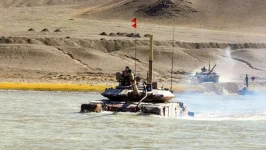In a notable advancement for India's aerospace and defence industry, Flying Wedge Defence & Aerospace has presented a prototype of an advanced Unmanned Combat Aerial Vehicle (UCAV).
The new aircraft, named the "Autonomous Aerial Aircraft," shares design similarities with Surveillance and Reconnaissance Unmanned Aerial Vehicles (SR-UAVs), signalling progress in India's efforts to develop its own defence technologies.
The aircraft was officially revealed at an exhibition in Bengaluru, Karnataka, held at Flying Wedge’s own facility. This event was part of the "Make in India" initiative, a government programme aimed at encouraging domestic manufacturing, and involved collaboration with Suhas Tejaskanda, founder of Flying Wedge.
The prototype's modern design, characterized by angular shaping and a matte black finish, suggests it is built for stealth capabilities, meaning it would be difficult to detect, and high agility – both crucial features for contemporary combat drones.
The "Autonomous Aerial Aircraft" is engineered to function independently, relying on sophisticated autonomous systems for its navigation, target engagement, and overall mission execution without direct human piloting.
While the company has not yet released detailed technical specifications, the aircraft's resemblance to SR-UAV designs indicates its potential to perform both surveillance tasks and combat operations.
This dual capability could provide a flexible and valuable resource for the Indian armed forces, addressing the increasing requirement for unmanned systems in modern warfare scenarios.
The development of such indigenous unmanned aerial systems aligns with the broader goals of the "Make in India" initiative, which seeks to bolster the nation's self-reliance in critical defence technology.
The introduction of platforms like the Autonomous Aerial Aircraft highlights the growing capabilities within India's private defence sector. Around the world, unmanned aerial vehicles are becoming increasingly important in military strategy, valued for their ability to conduct complex missions, provide sustained surveillance, and reduce risks to personnel.

